Drawing furniture plans is the first step in bringing your design ideas to life. Whether you’re a seasoned professional or a passionate DIY enthusiast, mastering the art of furniture plan creation opens a world of possibilities. This guide will delve into the essential principles, tools, and techniques to help you confidently design and build your dream furniture pieces.
We’ll explore fundamental design principles, like ergonomics, aesthetics, and functionality, to ensure your furniture is both beautiful and practical. You’ll learn about various software programs and hand-drawing tools, as well as different drawing techniques to create accurate and detailed plans. From initial concept sketching to final assembly specifications, we’ll guide you through the entire process of creating a comprehensive furniture plan.
Understanding Furniture Design Principles
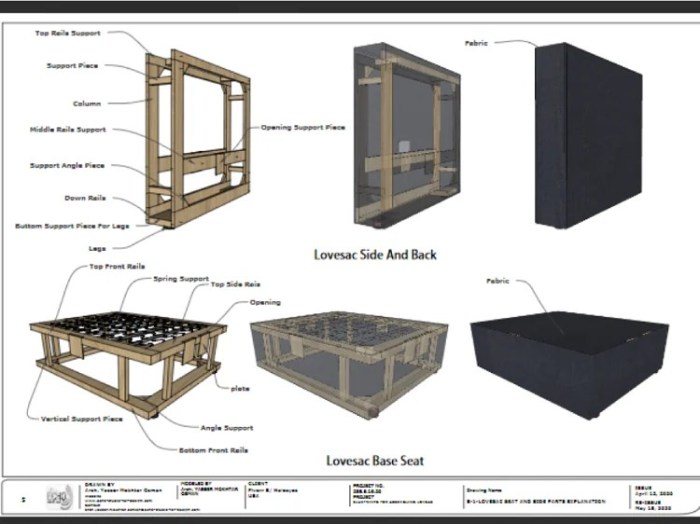
Creating functional and aesthetically pleasing furniture requires a deep understanding of design principles. These principles guide designers in making choices that ensure comfort, durability, and visual appeal.
Ergonomics
Ergonomics focuses on designing furniture that optimizes human well-being and performance. This involves considering the human body’s dimensions, movements, and posture. For example, chair heights should be adjusted to support proper posture and prevent strain on the back and neck. Desk heights should allow for comfortable typing and writing positions.
Aesthetics
Aesthetics encompasses the visual appeal of furniture. This includes factors like form, color, texture, and material. Designers consider the overall style and how it complements the surrounding environment. For instance, a minimalist chair with clean lines might be appropriate for a modern interior, while a Victorian-style sofa with ornate details would be better suited for a traditional setting.
Functionality
Functionality refers to how well furniture serves its intended purpose. This includes factors like stability, durability, and ease of use. For example, a dining table should be sturdy enough to support heavy dishes and have enough space for comfortable seating. A storage cabinet should be spacious and accessible for organizing belongings.
Scale, Proportion, and Balance
Scale refers to the size of furniture in relation to the surrounding space. Proportion relates to the harmonious relationship between different parts of a piece of furniture. Balance refers to the visual stability of the furniture. For example, a large sofa might overwhelm a small living room, while a small coffee table might look lost in a large space. Proper proportion ensures that different elements of a piece of furniture are in harmony with each other, creating a visually pleasing design. For instance, the height of a chair should be proportional to the width of its seat, and the arms should be positioned at a comfortable angle. Balance can be achieved through symmetry or asymmetry, where elements are distributed evenly or unevenly to create visual interest.
Tools and Techniques for Drawing Furniture Plans
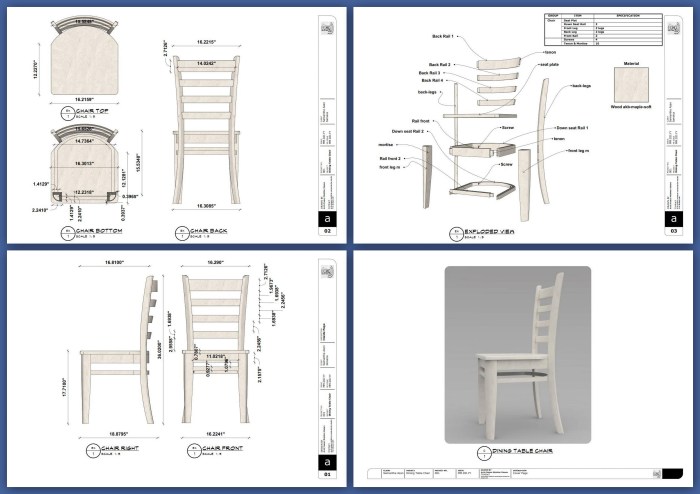
Creating detailed and accurate furniture plans is essential for successful furniture making. Whether you prefer digital or traditional methods, having the right tools and understanding various drawing techniques will help you bring your designs to life.
Software Programs for Drawing Furniture Plans
Software programs offer a convenient and efficient way to design furniture plans. They provide tools for creating precise measurements, manipulating shapes, and generating realistic 3D models.
- SketchUp: A user-friendly 3D modeling software popular among furniture designers. Its intuitive interface and vast library of extensions make it suitable for both beginners and professionals.
- Autodesk Fusion 360: A comprehensive CAD/CAM software offering advanced modeling, simulation, and manufacturing tools. Its powerful features are ideal for complex furniture designs and production processes.
- SolidWorks: Another popular CAD software renowned for its precision and detailed modeling capabilities. It’s widely used in the furniture industry for creating accurate and intricate designs.
- Rhino 3D: A professional-grade 3D modeling software known for its NURBS (Non-Uniform Rational B-Splines) modeling capabilities, allowing for smooth and organic shapes. It’s often used for furniture designs that involve curved surfaces.
Essential Tools for Hand-Drawn Furniture Plans
Hand-drawn plans offer a more traditional approach, allowing for creative freedom and flexibility.
- Rulers: Essential for accurate measurements and drawing straight lines. Different sizes and types of rulers are available, including standard rulers, T-squares, and drafting triangles.
- Pencils: Various grades of pencils provide different levels of darkness and line thickness, allowing for detailed shading and line variations. Common grades used in furniture design include HB, 2H, and 4H for precise lines and 2B, 4B, and 6B for darker lines and shading.
- Drafting Equipment: Includes tools like compasses, protractors, and French curves, which help create circles, angles, and curved lines with accuracy.
- Drawing Board: Provides a stable and flat surface for drawing and prevents paper from shifting. It’s often used in conjunction with a T-square for drawing parallel lines.
- Erasers: Essential for correcting mistakes and refining lines. Different types of erasers, such as kneaded erasers and vinyl erasers, are available to suit different needs.
Drawing Techniques for Furniture Plans
Several drawing techniques are commonly used for furniture plans, each offering distinct advantages for conveying different aspects of a design.
- Orthographic Projection: This technique uses multiple views to represent an object from different angles. Typically, three views are used: front, side, and top. Orthographic projection is ideal for showcasing the precise dimensions and overall shape of a piece of furniture.
- Perspective Drawing: Creates the illusion of depth and realism by depicting objects as they appear to the eye. One-point perspective uses a single vanishing point, while two-point perspective uses two vanishing points. Perspective drawings are effective for visualizing how a piece of furniture will look in a room.
- Isometric Drawing: A type of axonometric projection that depicts objects in three dimensions. It uses a specific angle to represent the three axes, resulting in a slightly distorted view. Isometric drawings are useful for visualizing the overall form and spatial relationships of a furniture design.
Creating a Furniture Plan
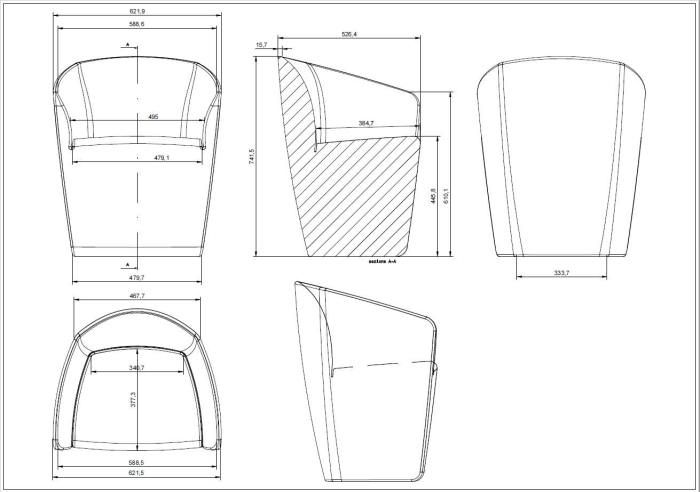
Creating a furniture plan is the core of furniture design, translating your vision into a tangible, buildable blueprint. It involves a systematic process, starting from initial ideation to detailed technical drawings, ensuring the final product meets the client’s needs and preferences.
Steps Involved in Creating a Furniture Plan
The process of creating a furniture plan can be broken down into distinct steps:
- Concept Sketching: This is the initial stage where you explore different design possibilities, capturing your ideas in rough sketches. You can experiment with various shapes, forms, and styles to find the most suitable design for the client’s needs and the intended room.
- Developing the Design: Based on the concept sketches, you refine the design, focusing on the functionality, aesthetics, and overall harmony of the piece. This involves considering the dimensions, materials, and construction techniques. You might create detailed sketches or use digital design software to further develop the design.
- Creating Detailed Drawings: This is the crucial step where you create precise technical drawings of the furniture piece. These drawings should include all necessary dimensions, material specifications, assembly instructions, and other details required for accurate construction.
- Creating a Bill of Materials: This document lists all the materials needed to build the furniture piece, including the quantity, size, and type of each material. This helps ensure that you have all the necessary materials before starting the construction process.
- Finalizing the Plan: Review and refine the furniture plan, ensuring all the details are accurate and complete. You can create a final drawing set for the client’s approval and for the furniture makers to use during the construction process.
Designing a Furniture Plan for a Specific Room
Designing a furniture plan for a specific room requires careful consideration of the client’s needs and preferences, as well as the room’s dimensions, layout, and existing furniture.
- Understanding the Client’s Needs: The first step is to understand the client’s needs and preferences. What is the purpose of the furniture piece? What style do they prefer? What is their budget? This information will help you create a design that meets their expectations.
- Considering the Room’s Layout: Consider the room’s dimensions, layout, and existing furniture. This will help you determine the size, shape, and placement of the new furniture piece. You can use scale drawings or 3D modeling software to visualize the furniture piece in the room.
- Choosing the Right Materials: The choice of materials will depend on the furniture piece’s purpose, style, and budget. You need to consider factors like durability, aesthetics, and cost. For example, a sturdy hardwood might be suitable for a dining table, while a lightweight plywood might be better for a bookshelf.
- Incorporating Ergonomics: Consider the comfort and usability of the furniture piece. For example, the height of a chair should be comfortable for sitting and the armrests should be positioned at the right height for support.
Importance of Clear and Concise Dimensions, Material Specifications, and Assembly Instructions
Clear and concise dimensions, material specifications, and assembly instructions are crucial for successful furniture construction.
- Accurate Dimensions: Precise dimensions are essential for creating a well-fitting and functional piece of furniture. Any errors in the dimensions could lead to problems during construction, resulting in a poorly fitting or unstable piece.
- Detailed Material Specifications: Detailed material specifications help ensure that the furniture maker uses the correct materials and finishes for the piece. This information should include the type of wood, the thickness, the finish, and any special requirements.
- Clear Assembly Instructions: Clear and concise assembly instructions are crucial for assembling the furniture piece correctly. The instructions should be easy to follow and include detailed diagrams and explanations.
Types of Furniture Plans
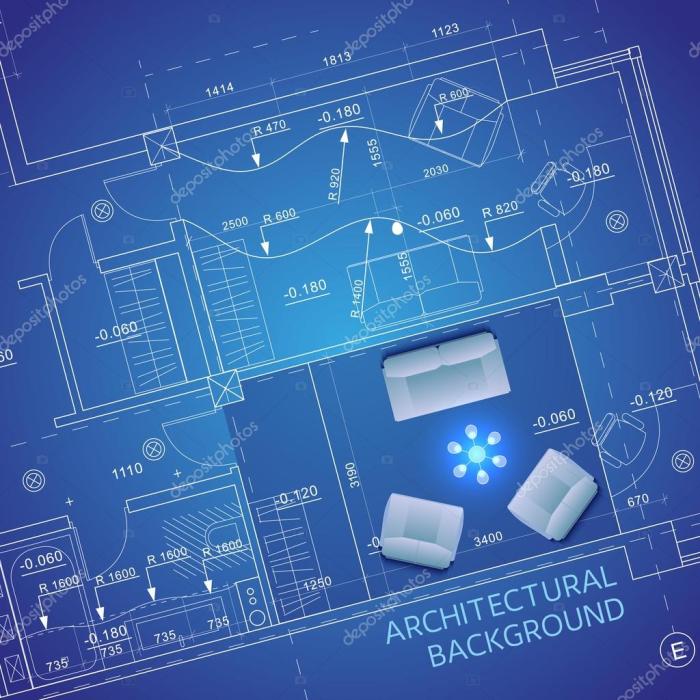
Furniture plans are essential for furniture designers and builders to communicate their ideas and ensure the successful creation of a piece. Different types of plans serve distinct purposes and offer unique advantages depending on the complexity of the project. Understanding these types of plans is crucial for effectively designing and constructing furniture.
Floor Plans, Drawing furniture plans
Floor plans are top-down views of a piece of furniture, showcasing its overall layout, dimensions, and arrangement of components. They are typically drawn to scale and use symbols and lines to represent different elements, such as drawers, shelves, legs, and other structural components.
Floor plans provide a comprehensive overview of the furniture’s footprint and help visualize its overall size and shape. They are particularly useful for:
- Determining the overall dimensions of the furniture.
- Planning the placement of components within the furniture.
- Ensuring proper proportions and balance in the design.
- Creating a visual representation for clients or manufacturers.
Elevation Plans
Elevation plans are side or front views of a piece of furniture, showcasing its height, width, and depth. They provide a detailed representation of the furniture’s exterior design, including its shape, ornamentation, and surface details.
Elevation plans are essential for:
- Visualizing the furniture’s aesthetic appearance.
- Communicating design details to builders or manufacturers.
- Creating a clear understanding of the furniture’s exterior profile.
- Ensuring consistent design elements across different views.
Construction Drawings
Construction drawings provide detailed instructions for building a piece of furniture. They include information such as material specifications, joint details, assembly instructions, and dimensions.
Construction drawings are critical for:
- Providing precise instructions for builders.
- Ensuring accurate construction and assembly.
- Minimizing errors and rework during the building process.
- Documenting the furniture’s construction for future reference.
Construction drawings can include various sub-types, such as:
- Exploded Views: These drawings show the individual components of the furniture disassembled, making it easier to visualize assembly steps.
- Detail Drawings: These drawings focus on specific components or joints, providing detailed information about their construction and assembly.
- Section Drawings: These drawings show a cross-section of the furniture, revealing its internal structure and construction methods.
Advantages and Disadvantages
Each type of furniture plan has its own advantages and disadvantages, making it important to choose the appropriate plan for a specific project.
Floor Plans
- Advantages: Provide a clear overview of the furniture’s layout and dimensions, easy to understand, facilitate space planning.
- Disadvantages: Limited in providing detailed construction information, may not accurately represent the furniture’s aesthetic appearance.
Elevation Plans
- Advantages: Communicate the furniture’s exterior design, showcase aesthetic details, helpful for visualizing the finished product.
- Disadvantages: Limited in providing construction information, may not accurately represent the furniture’s internal structure.
Construction Drawings
- Advantages: Provide comprehensive construction instructions, minimize errors during building, ensure consistency in construction.
- Disadvantages: Can be complex and time-consuming to create, require specialized skills, may not be suitable for simple projects.
Illustrating Furniture Plans
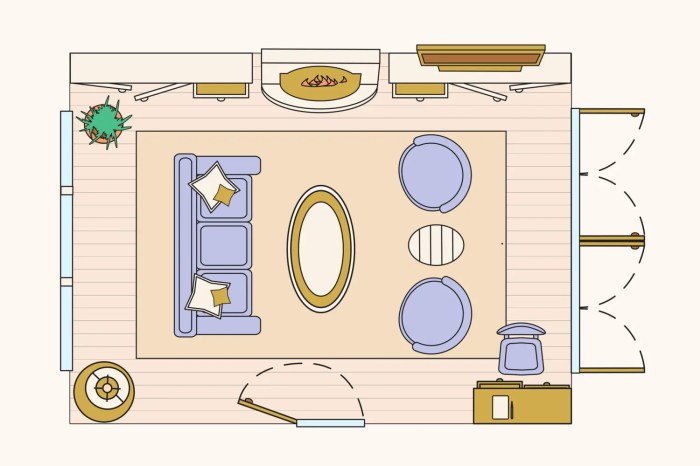
Illustrating furniture plans is an essential step in the furniture design process. It allows designers to visualize their ideas and communicate them effectively to clients, manufacturers, and other stakeholders. Clear and informative visuals are crucial for understanding the design intent, dimensions, and construction details of a furniture piece.
Types of Furniture Plans and Illustrations
Visual aids play a crucial role in conveying design ideas. Different types of furniture plans are used to depict various aspects of a piece, each with its own purpose and illustration style.
| Type of Furniture Plan | Description | Illustration Example |
|---|---|---|
| Orthographic Projection | A set of drawings that show the furniture from different angles (front, side, top). These plans are essential for understanding the overall shape and dimensions of the piece. | An orthographic projection of a chair would consist of three drawings: a front view, a side view, and a top view. Each view would show the chair’s shape and dimensions from a specific perspective. The front view would depict the chair’s front face, the side view would show the chair’s profile, and the top view would show the chair’s footprint. |
| Perspective Drawing | A realistic representation of the furniture as it would appear in three dimensions. Perspective drawings are useful for visualizing the overall aesthetic and scale of the piece. | A perspective drawing of a sofa would show the sofa in a three-dimensional space, creating a sense of depth and realism. The drawing would depict the sofa’s shape, size, and details, including the cushions, legs, and upholstery. |
| Exploded View | A diagram that shows the individual components of the furniture and how they assemble. Exploded views are helpful for understanding the construction process and for creating assembly instructions. | An exploded view of a table would show the tabletop, legs, and other components separated and arranged in a way that reveals how they fit together. Each component would be labeled, and the assembly process would be illustrated using arrows and numbers. |
| Cross-Section | A drawing that shows the internal structure of the furniture. Cross-sections are used to illustrate the construction details, materials, and joinery techniques. | A cross-section of a chair would show the internal structure of the seat, back, and legs. It would reveal the materials used, such as wood, metal, or foam, and the joinery techniques used to assemble the chair. |
Last Point
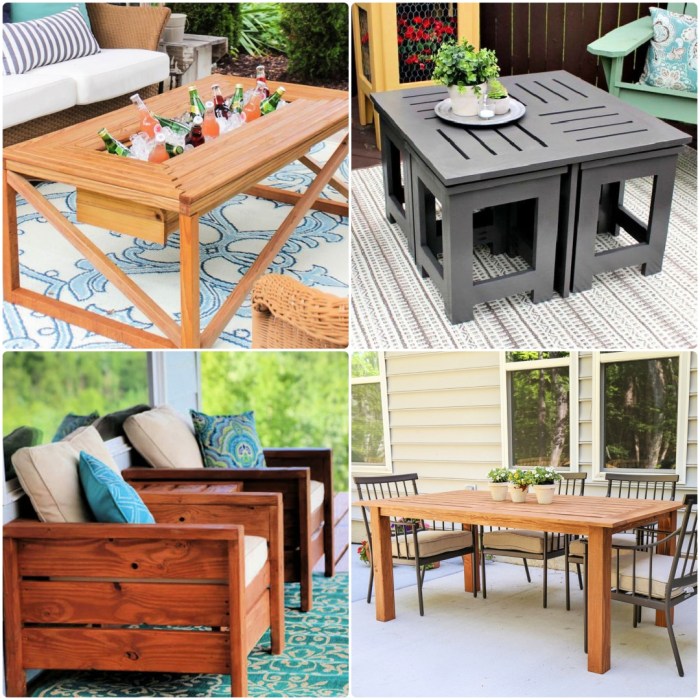
With a solid understanding of furniture design principles, the right tools, and effective drawing techniques, you’ll be equipped to create stunning and functional furniture. Whether you’re designing a custom dining table, a cozy armchair, or a sleek bookshelf, the ability to draw furniture plans empowers you to bring your vision to reality. So, grab your pencils, software, and a dash of creativity, and let’s embark on this exciting journey of furniture plan creation!
Key Questions Answered
What are the best software programs for drawing furniture plans?
Popular options include SketchUp, AutoCAD, Fusion 360, and SolidWorks. Each offers different features and learning curves, so choose one that suits your skill level and project needs.
How do I choose the right scale for my furniture plans?
A common scale for furniture plans is 1:10, meaning 1 inch on the plan represents 10 inches in real life. This provides a good balance between detail and legibility. Adjust the scale based on the size and complexity of your furniture.
Do I need to know how to use a drafting compass for drawing furniture plans?
While a drafting compass is helpful for creating precise circles and arcs, it’s not essential for basic furniture plans. You can often use software tools or even freehand techniques to achieve similar results.
Drawing furniture plans can be a great way to visualize your ideas before you even pick up a saw. It’s also a fun way to involve kids in the design process. You can find some great inspiration for simple woodworking projects for kids on websites like childrens woodworking projects.
Once you’ve got a design in mind, you can start sketching out the details and making sure all the measurements are accurate. This will help you avoid any surprises when you start building!
